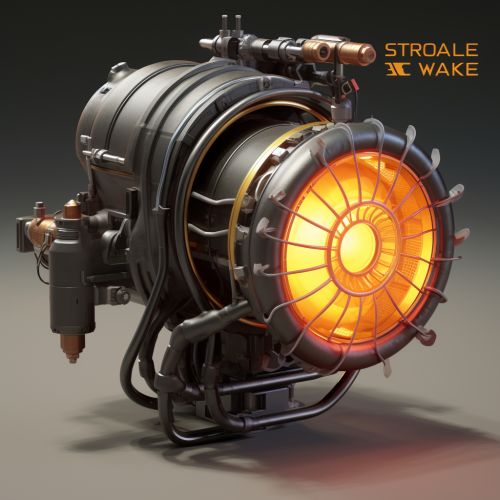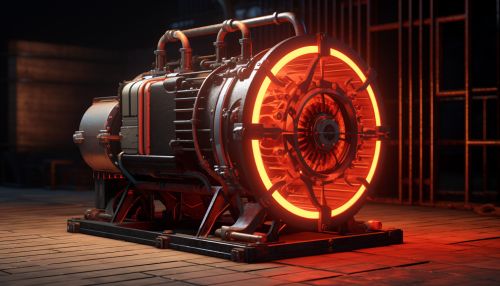Thermodynamic Cycle
Introduction
A Thermodynamic cycle refers to a sequence of thermodynamic processes that starts and ends at the same thermodynamic state. It is a fundamental concept in Thermodynamics, the branch of physical science that deals with the relationships between heat and other forms of energy. In a thermodynamic cycle, the system undergoes a series of changes, returns to its original state, and is then ready to repeat the cycle.
Types of Thermodynamic Cycles
Thermodynamic cycles can be divided into two general categories: power cycles, which produce a net amount of work, and refrigeration cycles, which consume work.
Power Cycles
Power cycles are typically used in power generation, propulsion, and heating systems. They can be further divided into two types: heat engines and gas turbines.


Heat Engines
A heat engine is a system that converts heat or thermal energy to mechanical work. It operates on a cycle and produces a positive work output. The Carnot cycle, Otto cycle, Diesel cycle, and Brayton cycle are examples of heat engine cycles.
Carnot Cycle
The Carnot cycle, named after Sadi Carnot, is an idealized thermodynamic cycle that provides the maximum possible efficiency that a heat engine can achieve. It consists of two isothermal processes and two adiabatic processes.
Otto Cycle
The Otto cycle, named after Nikolaus Otto, is used in spark-ignition internal combustion engines, such as most gasoline engines. It consists of two isochoric processes and two adiabatic processes.
Diesel Cycle
The Diesel cycle, named after Rudolf Diesel, is used in compression-ignition internal combustion engines. It consists of two isobaric processes, one isochoric process, and one adiabatic process.
Brayton Cycle
The Brayton cycle, named after George Brayton, is used in gas turbine engines. It consists of two isobaric processes and two isentropic processes.
Gas Turbines
A gas turbine is a type of continuous combustion engine that converts the energy from burning fuel into mechanical energy. The Joule cycle is an example of a gas turbine cycle.
Joule Cycle
The Joule cycle, also known as the Brayton cycle, is used in gas turbine engines. It consists of two isobaric processes and two isentropic processes.
Refrigeration Cycles
Refrigeration cycles are typically used in cooling systems, such as refrigerators and air conditioners. They consume work to transfer heat from a lower temperature level to a higher temperature level. The vapor-compression cycle and the absorption cycle are examples of refrigeration cycles.


Vapor-Compression Cycle
The vapor-compression cycle is the most common type of refrigeration cycle. It uses a circulating liquid refrigerant to absorb and remove heat from a space, and then rejects that heat elsewhere.
Absorption Cycle
The absorption cycle is a type of refrigeration cycle that uses a heat source to provide the energy needed to drive the cooling process.
Thermodynamic Processes
Thermodynamic processes involved in thermodynamic cycles include isothermal (constant temperature), adiabatic (no heat transfer), isochoric (constant volume), isobaric (constant pressure), and isentropic (constant entropy) processes.
Isothermal Process
An isothermal process is a change of a system in which the temperature remains constant. This means the system's internal energy change is balanced by heat transfer.
Adiabatic Process
An adiabatic process is a change of a system in which no heat is transferred into or out of the system. The system's internal energy change is manifested as work done.
Isochoric Process
An isochoric process is a change of a system in which the volume remains constant. This means the system does no work.
Isobaric Process
An isobaric process is a change of a system in which the pressure remains constant. This means the system's internal energy change is balanced by heat transfer and work done.
Isentropic Process
An isentropic process is a change of a system in which the entropy remains constant. This means the system is reversible and there is no energy wasted.
Efficiency of Thermodynamic Cycles
The efficiency of a thermodynamic cycle is a measure of how much of the heat input is converted to work. The efficiency can be calculated using the formula:
- Efficiency = Work Output / Heat Input
The maximum possible efficiency for any heat engine is the Carnot efficiency, which depends on the temperatures of the hot and cold reservoirs.
